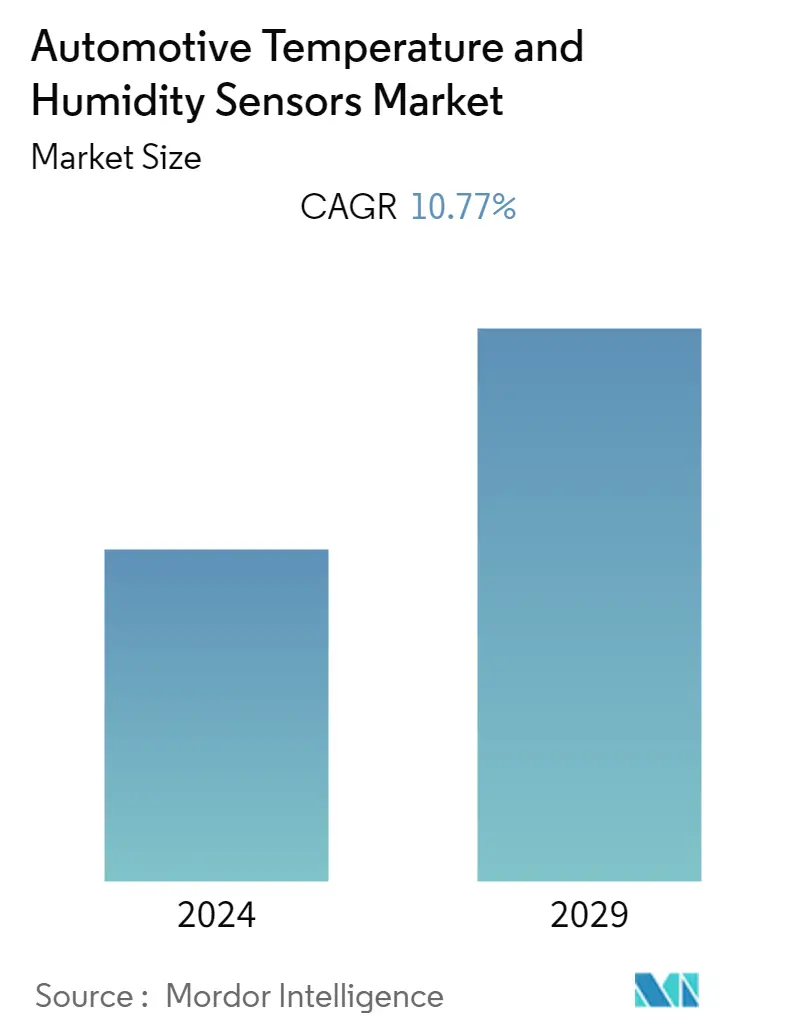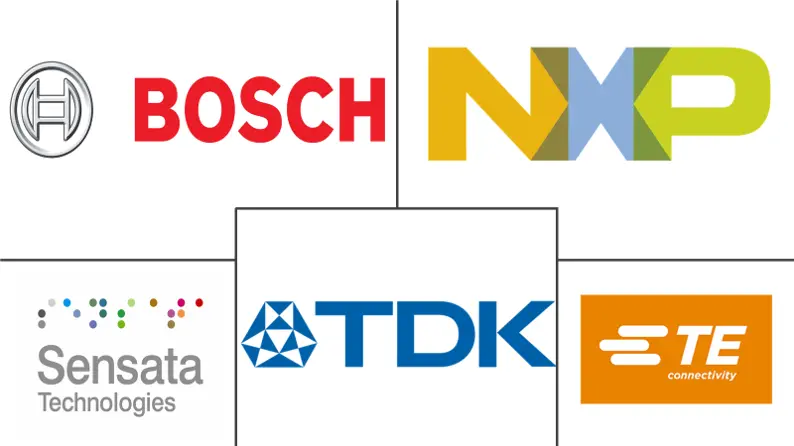Market Size of Automotive Temperature and Humidity Sensors Industry

| Study Period | 2019 - 2029 |
| Base Year For Estimation | 2023 |
| CAGR | 10.77 % |
| Fastest Growing Market | Asia Pacific |
| Largest Market | Asia Pacific |
| Market Concentration | Medium |
Major Players
*Disclaimer: Major Players sorted in no particular order |
Need a report that reflects how COVID-19 has impacted this market and its growth?
Automotive Temperature & Humidity Sensors Market Analysis
The Automotive temperature and humidity sensors market is expected to grow at a CAGR of 10.77% over the forecast period. The automotive industry has grown significantly in the past five years, aided by the growth in unit volumes and the emergence of high-innovation companies. The United States, China, and Europe continue to hold forte, while emerging nations, like India, are expected to record robust growth over the forecast period.
- Several automotive sensors monitor temperature changes, chassis solutions for roof and convertible switches, and seat position. Temperature and Humidity sensors are integrated into HVAC systems to prevent the fogging of windscreens and energy management. Vehicles frequently use humidity sensors to monitor the dew point and improve air quality. The sensors are also placed near the exhaust chamber to maintain urea quality, level, and temperature. Some of these sensors include urea pump pressure and exhaust gas temperature (EGTS) sensors.
- Every automobile is equipped with a fuel sensor to constantly check the fuel's temperature to determine whether the fuel utilization is efficient. If the engine's power is cold, a more extended period is taken to burn due to its high density. If the fuel is warm, it will take less time to burn. Here, the main problem is the varying inflow levels which could lead to the injury of certain parts of an automobile. This sensor will monitor the petroleum and ensures that injected at the right speed and temperature.
- However, the effects of COVID-19 on this market are only transient because only the production and supply chain is stalled. As the post-pandemic situation normalized, the production, supply chains, and demand for automotive temperature and humidity sensors gradually increased. The post-COVID-19 case will persuade companies to consider more advanced automotive temperature and humidity sensors to boost efficiency.
- Moreover, while safety regulations have boosted the growth of sensors, environmental regulations have been a significant driver for temperature sensor applications. And as per UBS, the global market for sensor semiconductors in autonomous vehicles is expected to reach a value of USD 30 billion by 2030. High growth in automotive sales may lead to potential growth for the automotive temperature and humidity sensors during the forecast period.
- Further, as per the study conducted by the Semiconductor Industry Association, In June 2022, The Semiconductor Industry Association (SIA) reported that sales for the semiconductor industry worldwide were USD 50.9 billion in April 2022, an increase of 21.1% over the USD 42.0 billion in April 2021 and 0.7% over the USD 50.6 billion in March 2022. The growth is mainly driven by the high demand from factory automation and a significant increase in the adoption of sensors in the automotive industry.
- It is anticipated that the high cost of the systems and installations is anticipated toThe restrict the market growth. Additionally, it is expected that the market will need help due to the growing demand for temperature and humidity sensors with better technical specifications. Potential component supply chain disruptions harm the market by reducing sales and production from a sensor standpoint.
